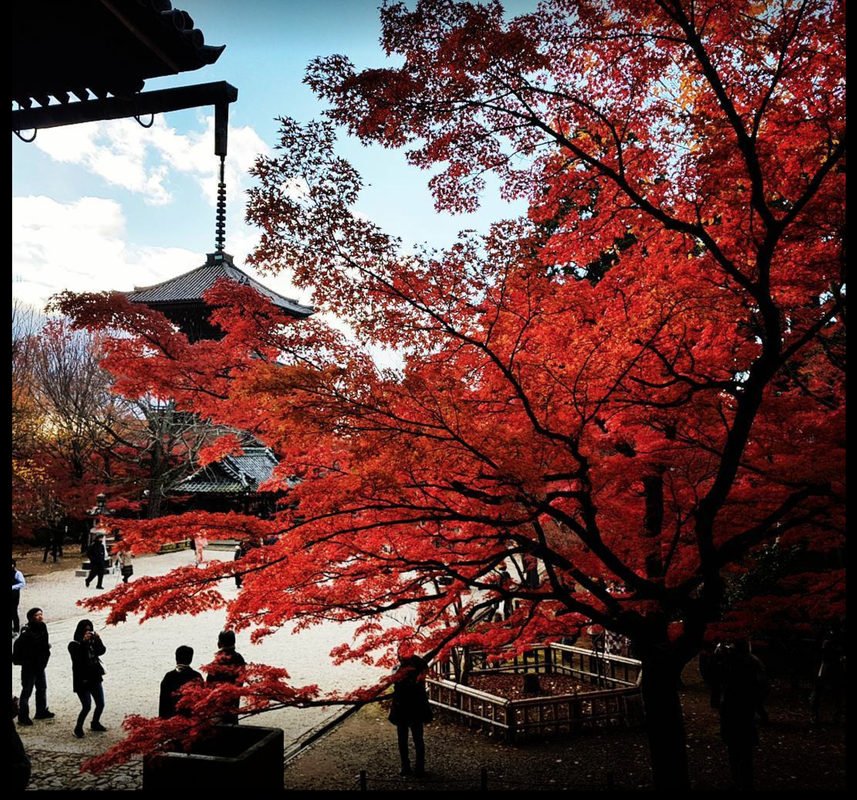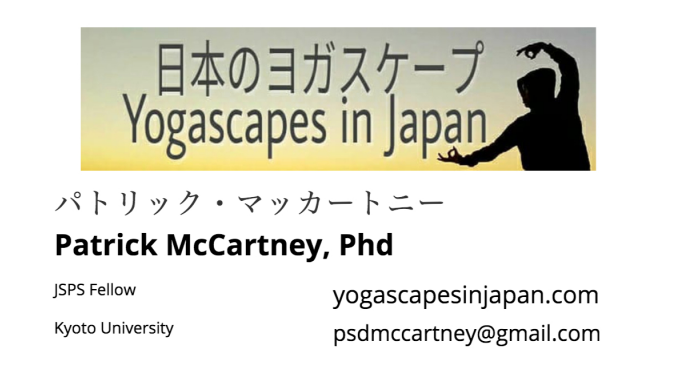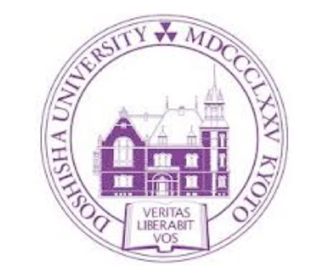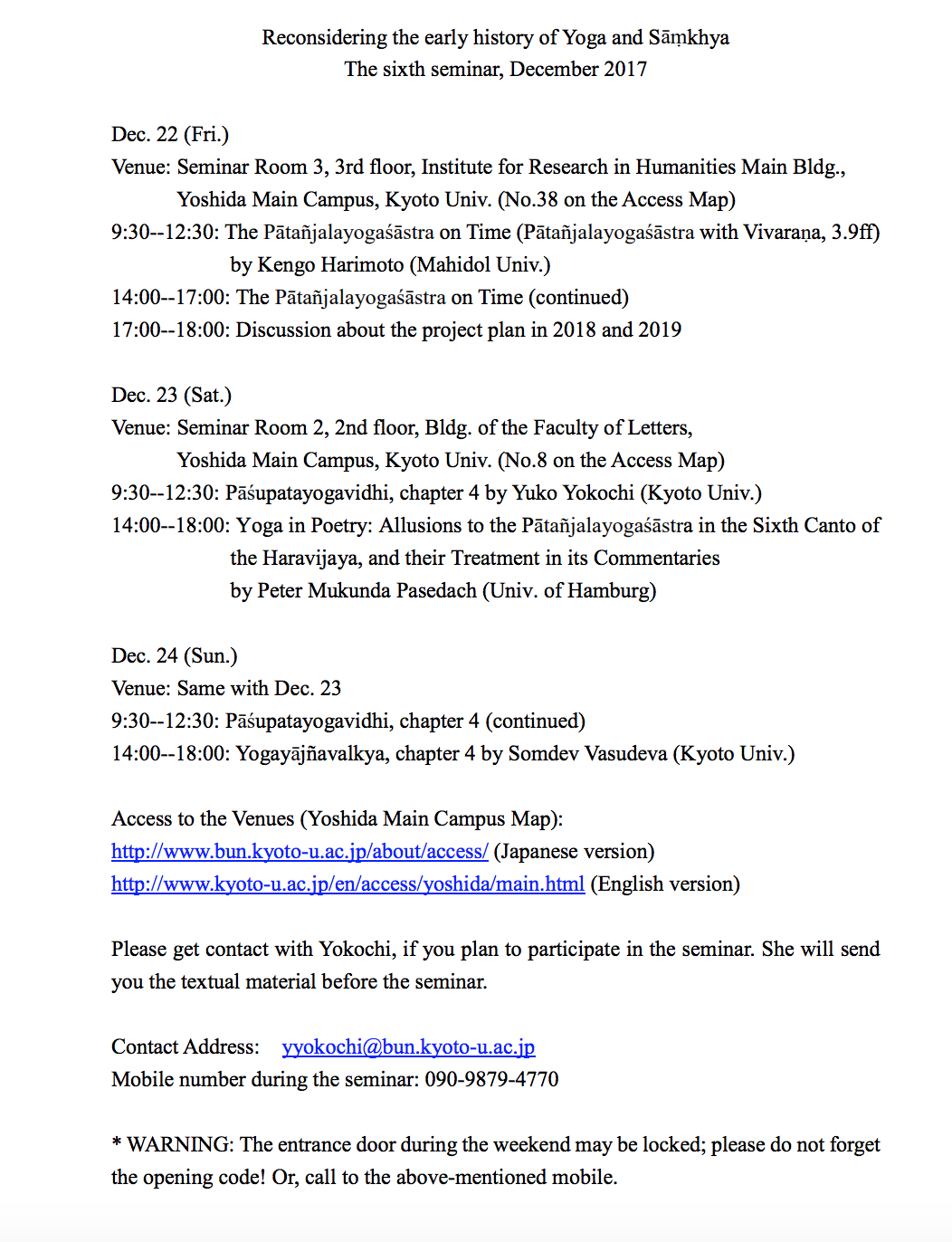|
24/11/2017 0 Comments 711 and yogaToday, we were in the local 711 store getting a snack and hot coffee (which was surprisingly drinkable) - while walking around the store we found ourselves at the magazine section. I always like to take notice of how many yoga magazines there might be, or not. Surprisingly, Yoga Journal's Japan edition was tucked away. Here is the front cover. In case ur wondering... this is how you spell 'yoga' in Japanese - yoヨ gaガ
0 Comments
24/11/2017 0 Comments Temple Yoga - 1st day of field workWe experienced our first yoga class this morning. A fusion of hatha, kriya and chakra yogas. I'm assuming the participants were stay at home mums, as the class was from 10:30 to 11:45pm. The foreign language was not a barrier. Megumi sensai demonstrated and made adjustments throughout the class. All in all, it was a nice, relaxing way to start the morning; which was accompanied by Sheila Chandra chanting Sanskrit mantras.
22/11/2017 0 Comments Almost settledIt's been a week since we arrived in Kyoto. Time has flown by. We have been so unbelievably busy with 'nesting'. It's almost done. It will be great to just be able to settle in a quotidian routine. We both crave routine. Now that most of our apartment is liveable, etc...I'm starting to think about other things. I have one of my bikes that I've brought with me back 'on the road', and, now, I've just had a look for the closest swimming pool where I can smash out some kms a couple of times a week. I love to swim laps. It's funny. I only breathe on my left side every 4 or 8 strokes, and I use the rhythm of the gayatri mantra, so as I swim I do japa...
Anyways, here is my first bit of research from 'the field'... while looking for a pool, I found this gym - http://www.heming.co.jp/demachi/hotstudio.html - which has a 'hot studio'. It's certainly going to be interesting to see what yoga is like in Japan. The first phase of the project will focus on 'Yoga in Kyoto'. Phase 2 will expand to other cities in and around Kansai Prefecture. Later, in 2018, the gaze will expand to other cities and towns across Japan. It would be great to hear from anyone who either lives in Japan, or who is travelling through Japan, and has a penchant for yoga, in whatever forms this takes. 22/11/2017 0 Comments Autumn colours - NANZEN-JI TEMPLEAfter an intense few days of settling in, we managed to venture out to Nanzen-ji Temple.
Some of the temples dated back to 1400s! The Autumn colours making their appearance known amongst the packed crowd were a delight. I couldn't keep my camera down, nor could the thousands of tourists with their high tech equipment. I highly recommend visiting #nanzenjitemple in November!! 18/11/2017 0 Comments yoga und politikHere is an article written by Elke Pichler - it's in Deutsch - it mentions some of my ideas on yoga and politics https://www.academia.edu/35178035/Yoga_und_Politik_-_Abhyasa_2017
13/11/2017 0 Comments new visiting cardsLast day before we head out to Japan tomorrow and it's a quick dash to get a new suitcase (old one just broke during packing) and some visiting cards printed out. Here's what the card will look like :-)
6/11/2017 0 Comments an interesting frameworkAn interesting framework for exploring spiritual vs religious tourism by Joseph M. Cheer Yaniv Belhassen Joanna Kujawa in Tourism Management Perspectives
The search for spirituality in tourism: Toward a conceptual framework for spiritual tourism "Considering secular motivations firstly, it is clear that underlying the many specific drivers are deliberations focused on the self with motives like wellness, adventure or recreation predominant. Additionally, focus tends to be on the attainment of some kind of spiritual benefit, such as getting in touch with one's inner self or achieving an altered state of consciousness. Further, such opportunities are shaped by the commodification of spiritual tourism experiences either as a package of travel components or payment for some facets (accommodation and food). In emphasising the self, secular drivers for spiritual tourism are consumptive by nature attributing beneficial outcomes to the traveller. Conversely, religious motivations for spiritual tourism largely leverage links to religion and are centred on specific drivers that are underlined by religious observance, ritualised practice, reaffirmation of identity and cultural performance. Here, the purposes for spiritual tourism link to reverence and connectivity to a higher authority or deity with the rewards underlined by religious practice predicated on institutionalised and genuine participation, with beneficial outcomes over and above the self. Indeed the focus is very much on the institutional or religious frameworks that govern travel for such purposes." It makes me think a lot about the different types of yoga tourists. I'm really looking forward to presenting at my first conference in Japan. I just found out that I've been accepted to present at the Anthropology of Japan in Japan conference. This conference is being held at the Doshisha University, which is in Kyoto.
As I'll only have been in Japan for a few weeks, I intend to present on the findings from one of my PhD dissertation chapters on the education of yoga consumers within the Shanti Mandir social network. The title of my talk is: How to become a Śāntamūrti (embodier of quietude): Ethnographic observations from within the Temple of Peace (Shanti Mandir) social network. Abstract This paper provides an overview of the socialisation process within the social network of the ‘Temple of Peace’ organisation. Shanti Mandir is a new religious movement founded in 1987 by the current spiritual head, Swami Nityānanda Saraswati. The social network consists of thousands of people spread across a global network of devotees. During multiple visits between 2009 and 2013, I conducted ethnographic fieldwork in the organisation’s main ashram (cloistered community), which is located on the west coast of India, Gujarat. I met thousands of people from all across the globe who came to be educated on how to perform and embody a particular disposition, and establish an internal definition of self based on the ‘authentic’ and ‘legitimate’ yogic identity promoted by Shanti Mandir (cf. Jenkins 1994). In this paper I ask the following question: What makes the groups different? I answer this question through employing Legitimation Code Theory’s first analytical dimension, namely, Specialisation. This is done to identify the various ways in which the symbolic exchanges of capital between the groups occur, how the internal nature of the competition for status and recognition determines legitimate participation, and how the distinct hierarchies operate based on observations of the spatial and gendered relations between the groups. This demonstrates that the hieratic structure of the network is not linear; but, instead, it can be understood as a three-sided pyramid. Each group works interdependently to support the guru’s mission, yet engages in intra-group competitions for status and symbolic resources towards becoming ‘authentic’ members. Jenkins, R. 1994. "Rethinking Ethnicity: Identity, Categorization and Power." Ethnic and Racial Studies 17, 2:197-223. |
CategoriesArchives
November 2019
|
 RSS Feed
RSS Feed







